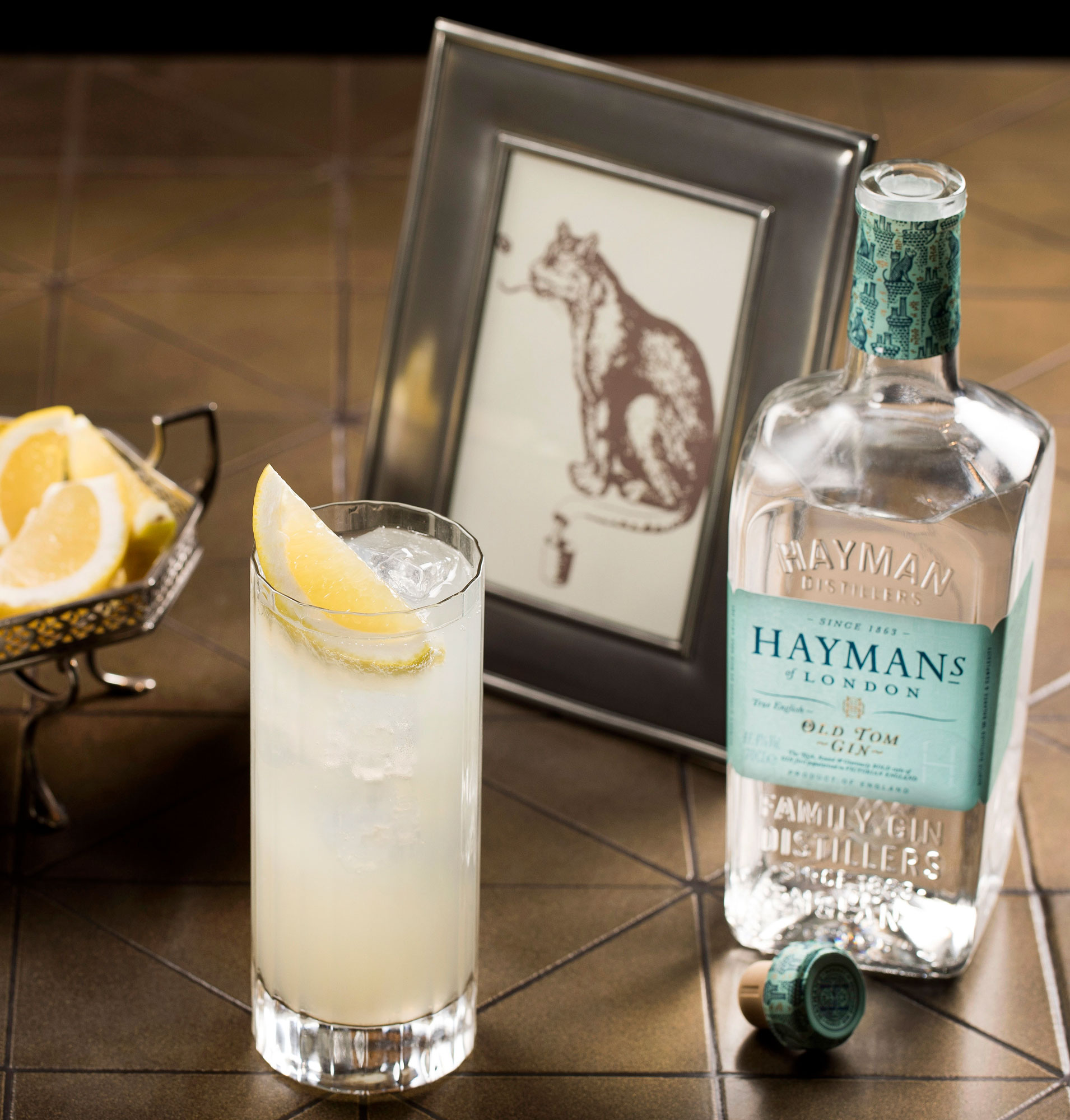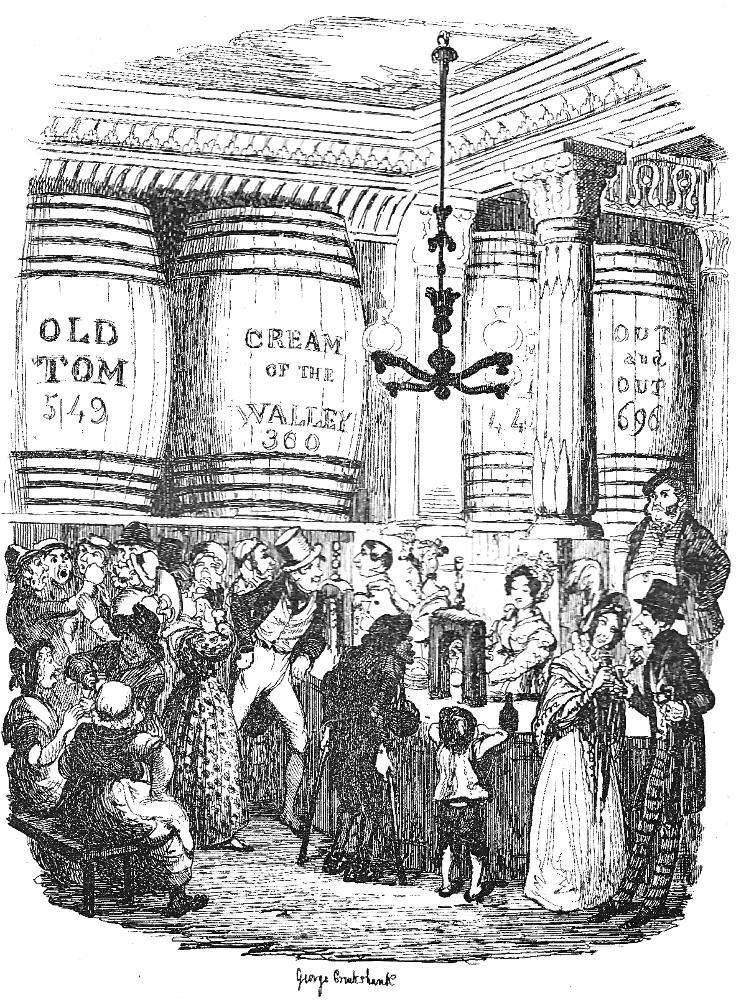The Tom Collins
There is perhaps no cocktail more refreshing than the Tom Collins—as originally formulated, with Old Tom gin. Hayman Distillers revived the historic gin in 2007, creating a new appreciation for the king of long drinks.

Like most cocktails that have become classics, the Tom Collins is a deceptively simple formula that yields more than the sum of its parts—those parts being Old Tom gin, lemon juice, sugar (or simple syrup), soda water and ice. David Embury describes the drink as “lemonade made with charged water and spiked with gin” in The Fine Art of Mixing Drinks. Yet he belies what makes the Tom Collins memorable and oh so refreshing: the interplay of sweet, sour, fizz and juniper—the latter infusing a rich and rounded spirit that predates the more angular and austere London dry-style gin.

 Tom Collins
Tom Collins
Shake with ice:
2 oz Hayman’s Old Tom Gin
1 oz lemon juice
1 oz simple syrup
Double-strain into a collins glass filled with ice.
Top with 4 oz club soda.
Garnish with a lemon wheel.
While some people think of the Tom Collins as a ’70s drink, enlivening swinging parties with the likes of the Screwdriver and the Tequila Sunrise, it is actually much older than that—an artifact not of the 1970s but of the 1870s, when it became a popular American fancy drink, in the parlance of the day. If we go back a little further, we see that that American fancy drink’s origins lie in a peculiarly English invention.
Old Tom gin arose in London during the late 18th and early 19th centuries, an era in which distillers made a rough, uncut spirit; rectifiers redistilled that spirit with botanicals to turn it into gin, diluting it to a drinkable proof; and retailers watered it down some more and added a bit of sugar (and, in some cases other, often questionable, substances).
“Gin was invariably sweetened for consumption—and, perhaps most importantly, cheap,” writes David Wondrich in a Daily Beast article that thoroughly explores the origins of Old Tom gin. “Gin was not an elegant spirit; British aristocrats did not sip it in their drawing rooms. Gin was what market women drank on wet, biting mornings; what coachmen nipped on while waiting by their horses; what you scraped together your farthings and ha‘pennies for a shot of.”

In that context, the term “Old Tom gin” referred to a high-quality version of a beverage whose producers weren't exactly known for, um, best practices. The “Old Tom” was Tom Chamberlain, the rectifier for a firm owned by John Hodges. Chamberlain would cultivate customers by giving them a sample of his “particular,” a gin that was sweetened but undiluted. “Old Tom’s gin” became sought after, and inspired enough imitators to launch a stand-alone category. (There is an alternate and commonly told origin story—linked to the fact that Old Tom gin was historically advertised with the image of a cat—that involves a “puss & mew” shop dispensing tots of gin via a sign painted with a tomcat. In any case, research is ongoing.)
According to another Wondrich article, it was likely Hodges Old Tom gin that was the basis of a famous Gin Punch served at Limmer’s Hotel in London by a beloved headwaiter named John Collin. It was, writes Wondrich, “the drink of the day among the sporting set (it had the twin recommendations of [Lord] Byron having endorsed it and middle-class people being afraid of gin).”


In the ensuing decades, Old Tom gin gained a following among a wider cross section of the populace (in part due to improved distilling technology) and made its way, via what was then called the John Collins cocktail, to Australia, Canada and the United States. An August 1873 edition of the New York Sun newspaper quotes an unnamed bartender from “a celebrated saloon in lower Broadway” as saying, “A new drink is called John Collins. It is made of old Tom gin, plain soda and lemon juice.” The reporter also singles out for praise the John Collins concocted by bartender E.F. Barry of the Everett House, calling it a “morning cooler.”


“In 1876,” writes Wondrich, the drink “makes it into the second edition of Jerry Thomas’s pioneering cocktail guide, and by 1880 it’s all over the United States. Only something has gone wrong with the name: now, the original recipe, with English Old Tom gin, is a ‘Tom Collins,’ while the ‘John Collins’ is made with Dutch genever or a domestic American imitation.”
While Old Tom gin fell out of fashion and all but disappeared from both the U.K. and U.S. markets by the mid-20th century, the Tom Collins endured, swapping in as its base the London Dry gins that had simply become synonymous with “gin.” That is a fine version of the drink. But the original formula is something of a revelation.

“The cocktail community was becoming increasingly interested in being able to make classic cocktails with the correct ingredients,” James Hayman told Robert Simonson in a 2012 Imbibe article on the revival of Old Tom. Simonson elaborates: “Hayman didn’t need to create a recipe from scratch. A descendent of the Burroughs clan, which founded Beefeater, he was in possession of an old family blueprint, dating from the 1860s. The recipe produced a spirit that had gin’s distinctive juniper snap but was softer, smoother and more approachable.”
The “Burroughs clan” link is James’ father, Christopher Hayman, who is celebrating 50 years as a distiller this year. Here's to Christopher, the Hayman family, and the revival of Old Tom gin!
